FY2015 Annual Report
Quantum Dynamics Unit
Denis Konstantinov
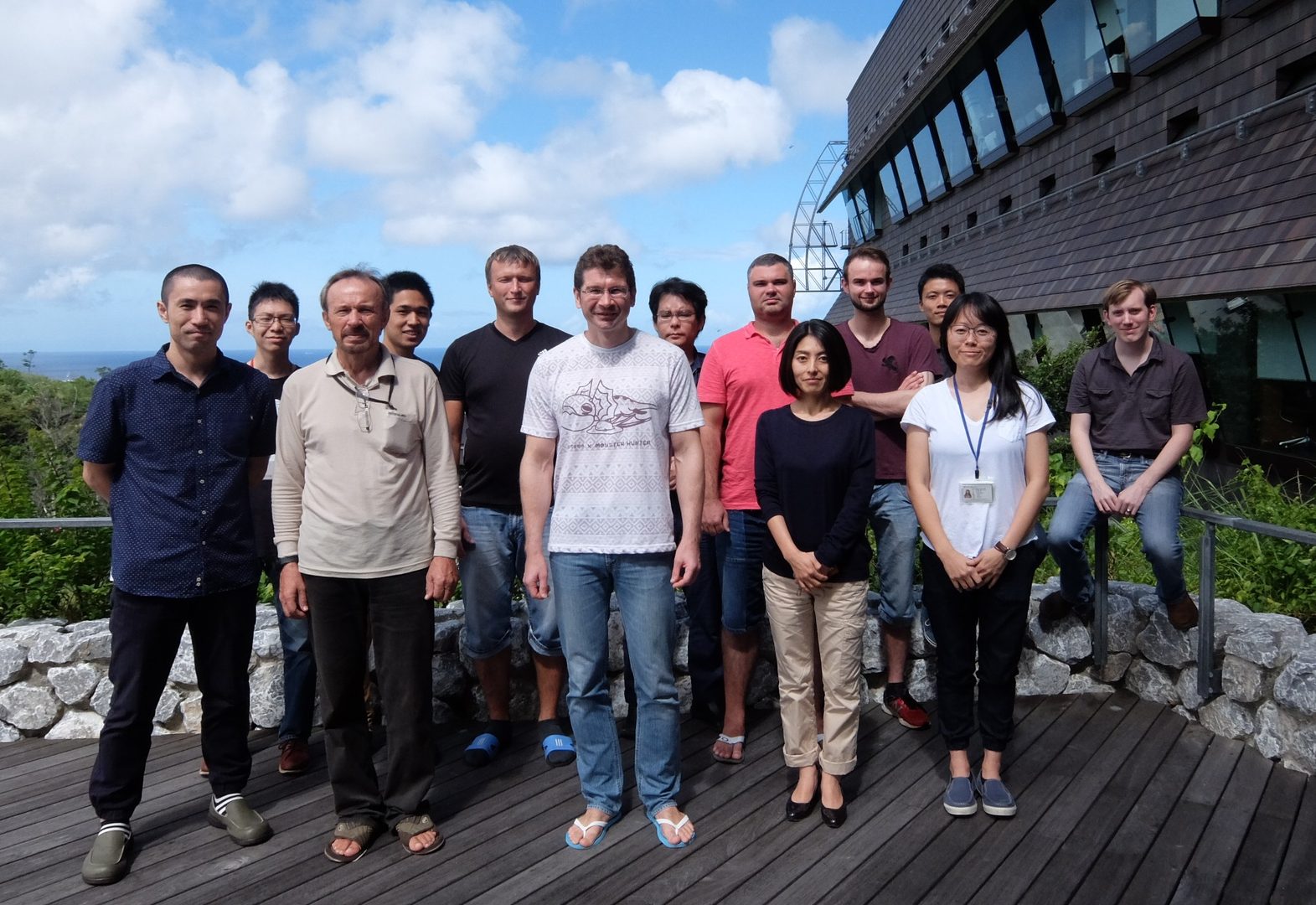
September 2016: (left to right) Yuimaru Kubo, Morihiro Ohta (part-time research assistant), Slava Dvornichenko, Yu Yamashiro (intern student, University of Ryukyu), Alexei Zadorozhko (new postdoc), Denis Konstantinov, Ryo Yamashiro, Oleksandr Smorodin, Taki Tazuke, Christopher Campbell (rotation student, OIST), Jiabao Chen, Jui-Yin Lin, Jason Ball (new PhD student)
Abstract
In FY2015, we continued our studies of microwave-induced dynamics in a 2D electron system on the surface of liquid helium. Using a high-quality-factor 100 GHz cavity resonator developed in our unit, we observed for the first time the strong coupling regime of interaction between a cavity electro-magnetic mode and the orbital motion of 2D electrons. This experimental development has potential prospect for CQED-type experiments in this system. We continue developing this and other microwave detection techniques for the experiments. We initiated collaboration with University Paris-Sud to study microwave-excited electron transport and successfully launched the first experiment with electrons on helium in France. We also continue our experiments with electrons on helium confined in microchannes, as well as coupled electron-nuclear spin ensembles in crystalline solids. Finally, we launched a new experimental program to study electron spin ensembles of silicon-vacancy centers in diamond with the purpose to develop novel hybrid quantum devices for Quantum Information Processing.
1. FY2015 Staff
- Yuimaru Kubo, Staff Scientist/Group Leader
- Leonid Abdurakhimov, Postdoc Scholar
- Ryo Yamashiro, Postdoc Scholar
- Oleksandr Smorodin, Postdoc Scholar
- Slava Dvornichenko, Technician
- Jui-Yin Lin, OIST PhD Student
- Jiabao Chen, OIST PhD Student
- Taki Tazuke, Research Unit Administrator
2. Collaborations
2.1 Theme: Photo-excited magneto-transport in 2D electrons on liquid helium in tilted magnetic field
- Type of collaboration: Joint research
- Researchers:
- Alexei Chepelianskii/ Laboratory of Solid State Physics/University Paris-Sud/France
2.2 Theme: Non-linear transport of 2D electrons on liquid helium confined in microchannels
- Type of collaboration: Joint research
- Researchers:
- David Rees/National Chiao Tung University/Taiwan
- Alex Badrutdinov/Engineering and Microfabrication Support Section/OIST/Japan
3. Activities and Findings
3.1 Strong coupling of cyclotron motion of 2D electrons on liquid helium to a microwave cavity mode (L. Abdurakhimov, R. Yamashiro) (link)
In our experiments we reached, for the first time, the strong coupling regime of interaction between the cyclotron motion of 2D electrons on the surface of liquid helium and a resonant electro-magnetic mode of a Fabry-Perot cavity resonator. The hallmark signiture of the strong coupling regime observed in our experiment is the splitting of the cavity spectrum when the resonant frequency of the empty cavity matches the cycotron frequency of electrons, the so called avoided crossing (see Fig. 1(a)). The corresponding splitting of the cycloron motion spectrum was obsereved in the electron trasport measuremernts, see Fig. 2(b). Despite the fact that similar observations of the mode splitting in many-particle systems have been described as a quantum-mechanical effect, we show that the observed splitting can be explained completely by a model based on the classical electrodynamics. The results of our calcualtions are shown in Fig.1(c,d).
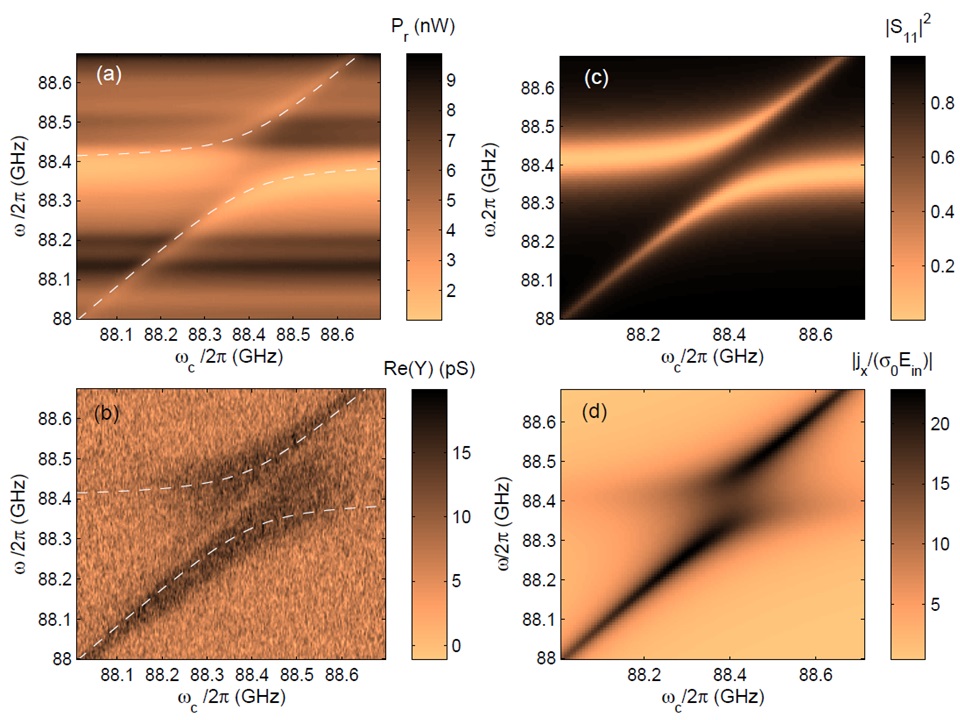
Figure 1: Comparison between experimentally observed (left side) and calculated (right side) signatures of the strong coupling regime of interaction between 2D electrons and a cavity electromagnetic-mode. The observed agreement implies that the avoided crossing of cavity and cyclotron motion spectra can be completely accounted by our classical model (link).
3.2 Photo-excited magneto-transport of 2D electrons on liquid helium in tilted magnetic field (in collaboration with Alexei Chepelianskii from LPS, University Paris-Sud)
In the presence of perpendicular magnetic field the orbital motion of 2D electrons is quantized having an equidistant (Landau) energy spectrum. Usually this orbital motion is uncoupled from the quantized (Rydberg) states of perpendicular orbital motion. However, it is predicted that the presence of the magnetic field component parallel to 2D plane can induce coupling between Landau and Rydberg energy states. The experiment with the tilted field is now operational at LPS. We have used it to study the resistivity of the electron gas under microwave excitation at 140 GHz as function of the cyclotron frequency and the detuning between Landau levels of the ground and excited Rydberg state manifolds. Preliminary results indeed show signatures of such coupling, see Fig. 2. The interest to this system comes from the fact that, if neglecting Coulomb interactions, it is described by a Jaynes-Cummings Hamiltonian. Thus, these experiments can open possibility to simulate coupled quantum systems’ Hamiltonian with electrons on helium.
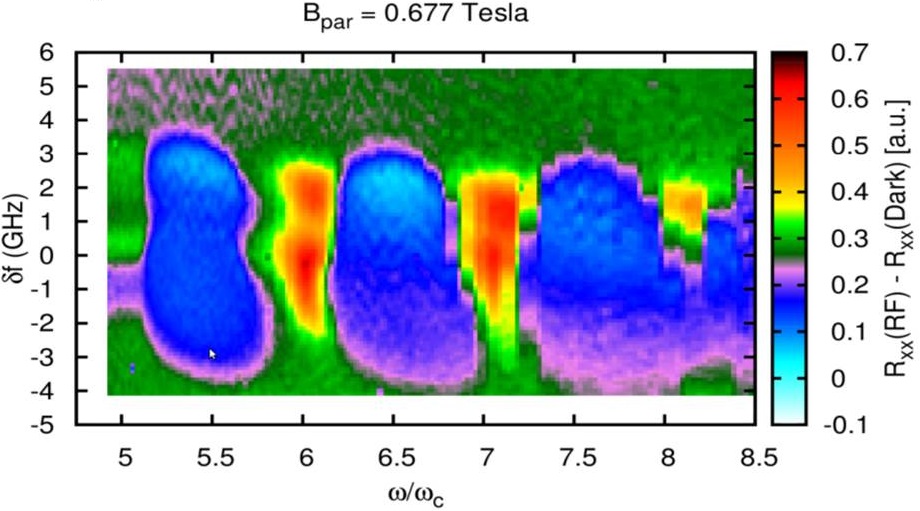
Figure 2: Electron resistivity versus the inverse cyclotron frequency (normalized to frequency of microwave excitation) and detuning between Landau levels of two Rydberg state manifolds.
3.3 Development of high Q-factor 35 GHz confocal cavity resonator for experiments on microwave-excited electron magneto-transport (R. Yamashiro)
We have fabricated a high Q-factor Fabry-Perot (FB) resonator working at frequency ~35 GHz towards an experiment to study microwave-polarization dependence of the microwave-induced resistance oscillations (MIRO) in electrons on liquid helium. A high quality factor ~12,000 was achieved by optimizing several parameters such as coupling of the waveguide to the cavity, thickness of the spherical mirror, surface roughness and Fresnel number. The axial symmetry of the fabricated resonator allows us to preserve polarization direction of the resonant cavity TEM mode. The experiment to study circular polarization dependence of MIRO is underway.
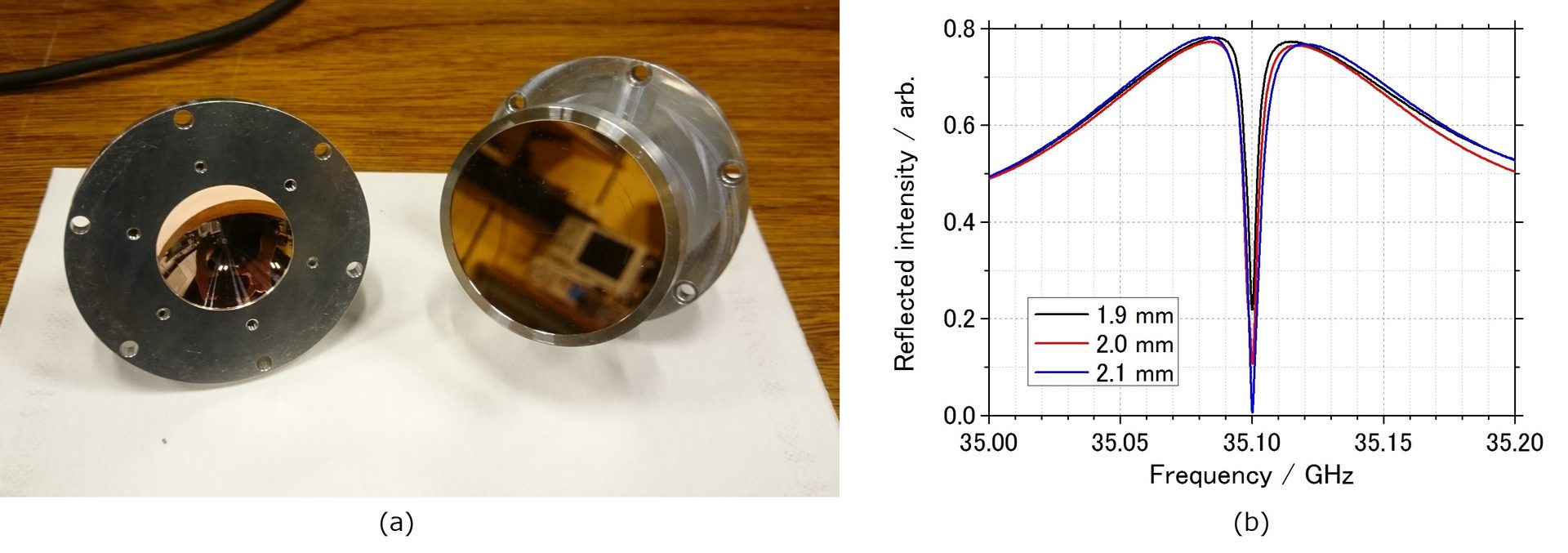
Figure 3: (a) Homemade copper mirrors for confocal FB resonator. (b) Observed reflection spectrum as a function of aperture diameter at the center of the spherical mirror.
3.4 Suppression of Brag-Cherenkov scattering of 2D electron crystal on liquid helium subject to periodic electrostatic potential (J.-Y. Lin, O. Smorodin, in collaboration with D. Rees from National Chiao Tung University, Taiwan, and Alex Badrutdinov, Engineering and Microfabrication Support Section in OIST)
Decoupling of two systems can be realized by mismatch of their characteristic frequencies. To study the nature of friction, the interfacial dynamic motions of two lattices with microscopic lattice constants are of great interest. Wigner Crystal (WC) on liquid helium nicely presents the interaction between a lattice structure and a soft surface with a strong coupling. The kinetic energy of WC is transferred via many-electron coherent emissions into vibrational excitations of ripplons on the surface of liquid helium. This mechanism is described as the Bragg-Cherenkov scattering. Here we report the observation on suppression of Bragg-Cherenkov scattering of WC in the presence of an external periodic potential. We also propose a simple model that explains the suppression by the phase-mismatch between WC and ripplons as a result of the density modulation of surface-state electrons by the external periodic potential.

Figure 4: Suppression of Bragg-Cherenkov scattering. The measured signals are the current of surface-state electrons in solid phase moving through a 5-µm wide and 101-µm long channel. An external periodic potential of 1-µm in period is applied along the channel with the amplitude dV. Left: I-Vpp curves measured at different values of the amplitude of periodic potential dV, as indicated. The current plateaus correspond to the BC scattering regime. Inset: Same data organized as a 2D-plot showing I vs Vpp and dV. Right: Differential conductance dI/dVpp versus Vpp and dV, derived from the data presented in the inset. The bright yellow line, corresponding to transition from the BC regime to sliding regime, is clearly observed at low dV and completely disappears at higher dV.
3.5 Measurements of T2n relaxation time for nuclear spins in MnCO3 antiferromagnet with strong hyperfine interaction (J. Chen, L. Abdurakhimov)
We measured the T2n relaxation time of MnCO3 at temperature around 200 mK by observing the two-pulse spin echo decay. Due to the strong hyperfine interaction, the NMR frequency in the antiferromagnet MnCO3 is shifted by the coupling between nuclear spin and electron spin when cooled down to below 1K. This material may demonstrate strong coupling to a microwave resonator while remaining relative long coherence time compared with other magnetic materials (e.g. YIG). We made use of frequency modulation echo, which is a mechanism available for systems with large nonlinear frequency shift, to measure the relaxation time scale of MnCO3. It is found that the echo decay signal, therefore the T2n dephasing time of nuclear spins, have two distinct characteristic time scales which differ by an order of magnitude. The mechanism of nuclear spin dephasing is currently under investigation.
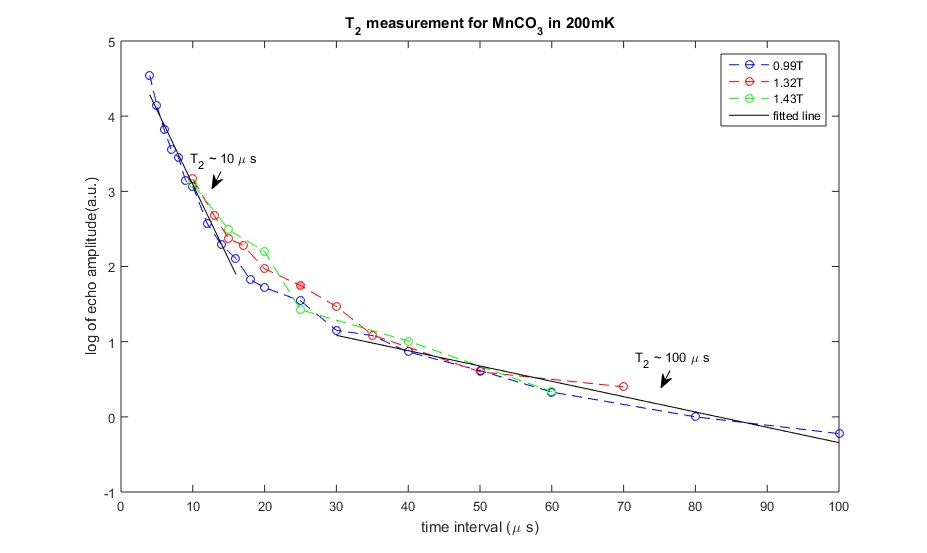
Figure 5. Decay of nuclear spin echo signal in log scale in a MnCO3 sample observed using the two-pulse echo technique at temperature T=220 mK. The experiments were performed under three different values (B=0.99, 1.32 and 1.43 Tesla) of the external magnetic field. The black line shows the estimated T2n by fitting the curves. It shows that it went through two stages of exponential decay with T2n ~10µs and T2n~ 100 µs.
3.6 Preparation for the Electron-Spin Resonance of impurity center spins in diamond (Y. Kubo, J. Ball)
For the electron spin resonance (ESR) spectroscopy of impurity spins in diamond at millikelvin temperature in a dilution refrigerator, such as nitrogen-vacancy (NV) or silicon-vacancy (SiV) centers, we designed, made, and tested microwave loop-gap resonators at room temperature. Figure 7 shows one of the tested resonators (top: photos, bottom: COMSOL simulation results for the design).
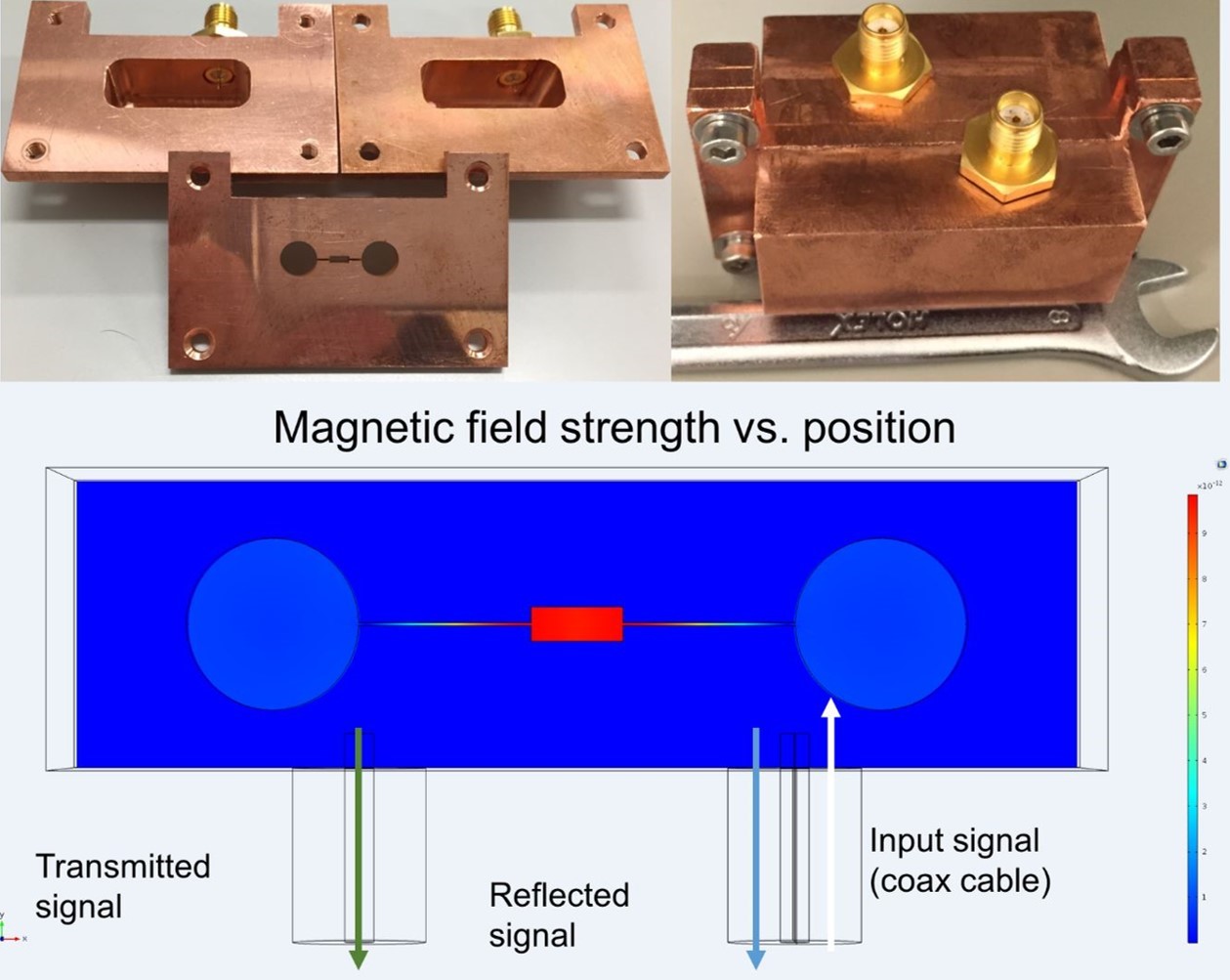
Figure 6. A loop-gap resonator made and tested at the Quantum Dynamics Unit.
4. Publications
4.1 Journals
-
Badrutdinov, A., Abdurakhimov, L., Konstantinov, D. Collective Excitations in a Two-Dimensional Electron System on Liquid Helium-4 under Cyclotron Resonant Condition, Journal of the Physical Society of Japan, 85, 5, 053601, doi:10.7566/JPSJ.84.053601 (2015)
-
Chepelianskii, A., Watanabe, M., Nasyedkin, K., Kono, K., Konstantinov, D. An Incompressible State of a Photo-Excited Electron Gas, Nature Communications, 6, 7210, doi:10.1038/ncomms8210 (2015)
-
Abdurakhimov, L. Bunkov, Y, Konstantinov, D. Normal-Mode Splitting in the Coupled System of Hybridized Nuclear Magnons and Microwave Photons, Physical Review Letters, 114, 226402, doi:10.1103/PhysRevLett.114.226402 (2015)
-
Yamashiro, R., Abdurakhimov, L., Badrutdinov, A., Monarkha, Y., Konstantinov, D. Photoconductivity responce at cyclotron-resonance harmonics in a nondegenerate two-dimensional electron system on liquid helium, Physical Review Letters, 115, 256802, doi:10.1103/PhysRevLett.115.256802 (2015)
4.2 Books and other one-time publications
Nothing to report
4.3 Oral and Poster Presentations
-
Konstantinov, D. Magnetotransport in electrons on helium under microwave excitation, School for Advanced Sciences: Quantum Transport in 2D Systems, Luchon, France (May 2015)
-
Abdurakhimov, L. Strong coupling between hybridized nuclear magnons and microwave photons, TU Delft, the Netherlands (Jun 2015)
-
Abdurakhimov, L., Powell, W., Konstantinov, D. Towards Microwave Measurement of Electron Spin Coherence Time in 2DES on Liquid Helium, 21st International Conference on Electronic Properties of Two-Dimensional Systems, Sendai, Japan (Jul 2015)
-
Badrutdinov, A., Smordin, O., Rees, D., Lin, J., Konstantinov, D. Non-linear transport of the Wigner crystal in quasi-1D structures, 21st International Conference on Electronic Properties of Two-Dimensional Systems, Sendai, Japan (Jul 2015)
-
Kubo, Y. Hybrid Quantum Systems with Superconducting Circuits and NV centers in Diamond, The 71th Annual Meeting of the Japanese Physical Society, Sendai, Japan (Mar 2016)
-
Kubo, Y. Circuit QED and Spins: from Quatnum Memory to Ultra Sensitive Magnetic Resonance, The 63th JSAP Spring Meeting, Tokyo, Japan (Mar 2016)
5. Intellectual Property Rights and Other Specific Achievements
Nothing to report
6. Meetings and Events
6.1 Seminars
Quasi-1D Electron Systems on the Surface of Liquid Helium
- Date: May 23, 2015
- Venue: OIST Campus Lab1
- Speaker: Dr. David G. Rees (National Chiao Tung University)
Hybrid Quantum Systems with Superconductors and Spins
- Date: Oct 13, 2015
- Venue: OIST Campus Lab1
- Speaker: Dr. Yuimaru Kubo (CEA-Saclay)
Spin in various semiconductor systems: Coherence, entanglement, and applications
- Date: Feb 29, 2016
- Venue: OIST Campus Lab1
- Speaker: Dr. Eisuke Abe (Keio University)
7. The Category or Type of Funding, like External Funding, Awards, etc.
Grant-in-Aids for Scientific Research (KAKENHI MEXT), Scientific Research (C), “Spin superfluidity in solid antiferromagnets” (反強磁性体におけるスピン超流動の核磁気共鳴研究).
JST-PRESTO: “Coherent Bidirectional Conversion between Optical and Microwave Photons using Electron Spins in Solids” (固体中の電子スピンを用いた光-マイクロ波のコヒーレント相互変換)



